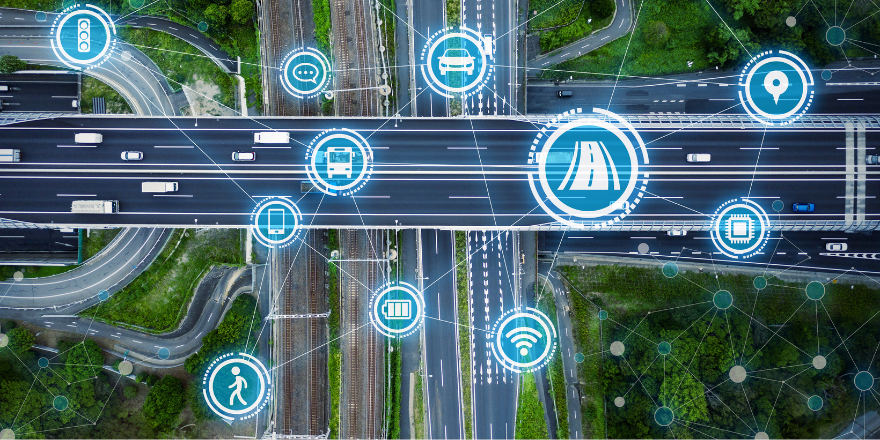It’s a fact that safe, efficient student transportation programs are built on the expertise and commitment of exceptional team members. There’s a place for technology in the mix as well, giving hard-working drivers, dispatchers, and technicians tools that support safety and efficiency. Here are five ways innovative technology is transforming the traditional yellow school bus.
GPS
GPS (Global Positioning System) technology is an increasingly popular tool for school buses, allowing for various important safety measures. Here’s how GPS contributes to safer student transportation:
Real-time monitoring
GPS tracking provides student transportation contractors and school administrators with detailed information about the locations of buses. This allows for more accurate estimates of arrival and drop-off times, enhancing student safety.
Emergency response
GPS also helps ensure buses are following designated routes and adhering to schedules. In the event of an emergency or deviation from a planned route, dispatchers or transportation directors can geolocate a bus and take appropriate action. GPS information can be crucial for emergency responders as well, allowing them to quickly find a bus if something goes wrong.
Route optimization
Data provided by GPS can be used to optimize bus routes by analyzing factors such as peak traffic congestion. By identifying the most efficient pathways, contractors can maximize fuel efficiency, minimize delays, and ensure smoother journeys for students.
Transparency
Some GPS systems offer parent communication features such as mobile apps or web portals. These systems allow parents to see where their children’s buses are in real time, building even greater transparency – and trust – into each bus ride.
Telematics
Telematics refers to telecommunications and information technology in vehicles that records and shares data about driver and vehicle behavior. Here’s how telematics can promote school bus safety:
Encourage safer driving
Telematics can collect information on various aspects of driver behavior, including speed, rapid acceleration, braking patterns, and adherence to traffic rules. This allows student transportation contractors to provide feedback to drivers, either by rewarding appropriate driving habits or by pointing out areas for improvement. By identifying safer driving habits, telematics systems contribute to an overall reduced risk of accidents and better safety on the road.
The information captured by telematics also can assist in accident investigations, giving safe drivers an important “backup” if an accident happens.
Maintenance monitoring
Telematics can monitor the health and performance of school bus engines, brakes, and electrical systems as well. By collecting data on factors like fluid levels or tire pressure, these systems can help identify areas for maintenance before they become problematic. This proactive approach reduces the chance of an unexpected breakdown or malfunction that could compromise safety.
Door entry sensors
Door entry sensors are designed to detect when the bus doors open or close, helping ensure the safety of students when boarding or exiting the bus.
Some sensors include features like anti-pinch technology, which can detect if the door is trying to close on an object or child. If an obstruction is detected, the sensors can engage doors to either automatically reopen or stop closing, minimizing the potential for accident or injury.
Digital cameras, inside and out
It’s increasingly common for school buses to be equipped with digital cameras, mounted either inside or outside of the vehicles. Here’s how they can enhance safety for drivers and students:
Monitoring behavior
Interior cameras help monitor student behavior, encouraging a safer, more orderly environment. If issues with misconduct, bullying, or other inappropriate behaviors arise, the footage captured by a digital camera can help determine the cause of an incident and assist in resolving any disputes that may arise. They provide important information that helps school officials to intervene and promptly address concerns.
Eliminating blind spots
Drivers will attest to the effectiveness of the many, many mirrors affixed to school buses. Cameras, however, provide an enhanced view for drivers, highlighting areas outside the bus like the “danger zone,” reducing the risk of accidents, and supporting a safer ride for everyone.
Stop arm violation detection
Some school buses are equipped with external cameras specifically aimed at monitoring stop arm violations, like the systems provided by BusPatrol. These cameras capture footage of vehicles that illegally pass a school bus while the stop arm is deployed and the red lights are flashing. The recorded evidence can be used to hold violators accountable, helping to protect students and even earn revenue for the school district.
It’s important to note that the use of cameras on school buses may be subject to varying privacy regulations and policies. Schools and districts typically establish guidelines for camera usage to ensure that the privacy rights of students and staff are respected while maintaining a safe and secure transportation environment.
RFID and smart cards
The use of student ID cards with computer chips for safer operation of school buses isn’t a widespread practice yet, but some districts are onboard with this new technology to enhance safety and improve operational efficiency. These IDs, often referred to as smart cards or RFID cards, can offer several benefits:
Efficiency
RFID cards can be used to provide detailed information about student boarding and exiting patterns on buses. This data then can be used to optimize routing for more efficient transportation programs.
Student safety
ID cards can be scanned to help ensure students board the correct buses and disembark at the right stops, keeping them safer. And because only students with valid ID cards can board the bus, this technology reduces the chances of an unauthorized individual gaining access to a vehicle.
Districts can even integrate the data collected by RFID cards into automated attendance management systems. This is particularly useful for districts with large student bodies or those serving broad geographic areas.
Contact us
If you’re interested in how technology could benefit your student transportation business, reach out to us. We’re ready to build a pathway to partnership.
American Student Transportation Partners (ASTP) is a national network of reliable student transportation providers. We’re driving the future of student transportation by providing access to education through safe, reliable student transportation programs. Exceptional bus operators choose ASTP because of our innovative approach to partnership, as well as the resources we provide to help “future-proof” their operations.
To learn more about partnering with ASTP, contact Tod Eskra, President, at [email protected] or call (314) 560-5946.

